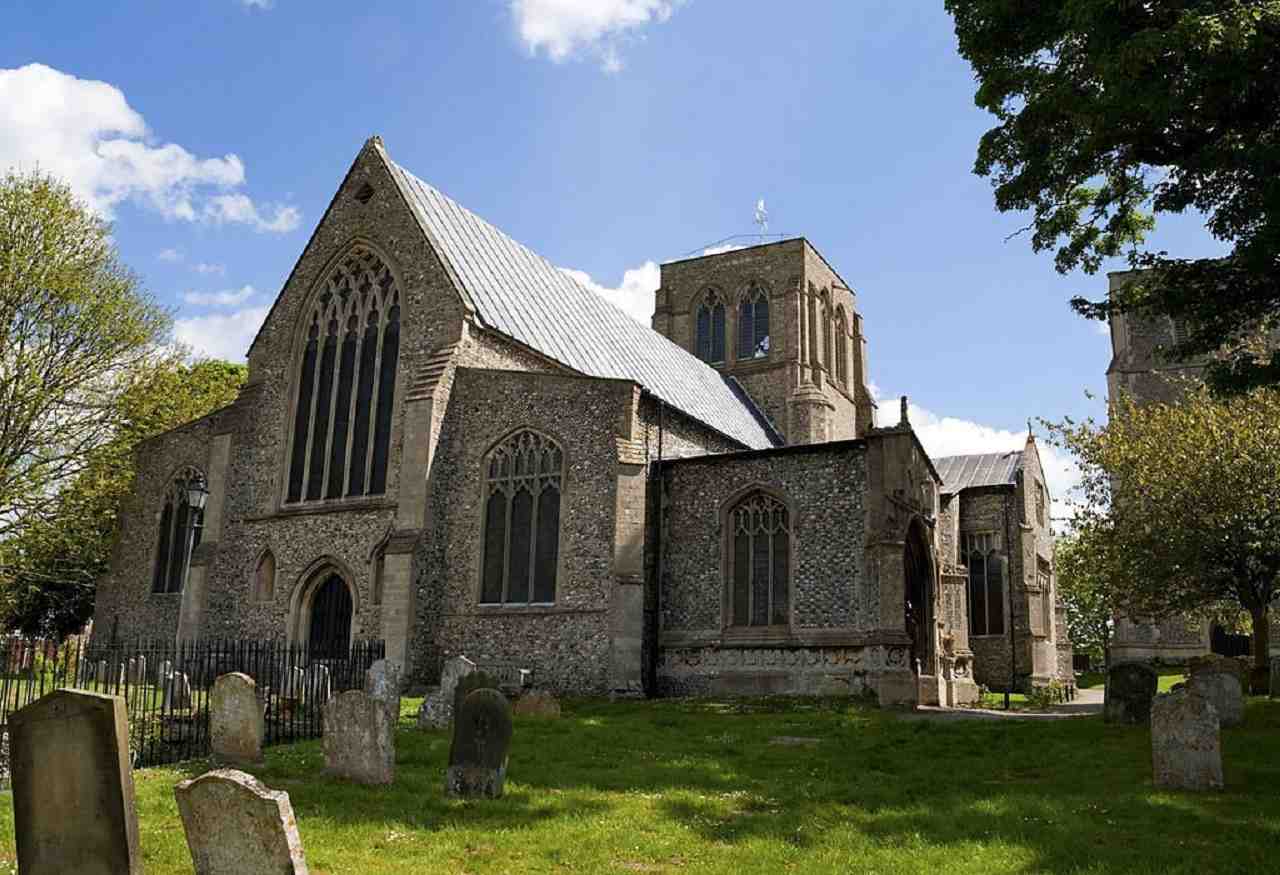Located amidst the peaceful landscapes of Norfolk, England, the beautiful town of Dereham also referred to as East Dereham, invites us to embark on a journey through time and tranquility. This hidden gem, with its rich historical significance, vibrant present, and promising future, entices us to unravel its secrets and discover the essence that makes it a cherished destination. As we embark on this voyage, we delve into the heart of Dereham, uncovering its historical roots, geographical allure, and the stories that have shaped its unique identity.
It is proposed that the etymology of Dereham’s vocabulary can be outlined back to a deer park that was present in the area, potentially during the seventh century, as the name’s rough translation denotes a “confine for deer”. However, this is a relatively contemporary notion, as it has been established that the town predates the Saxon epoch.
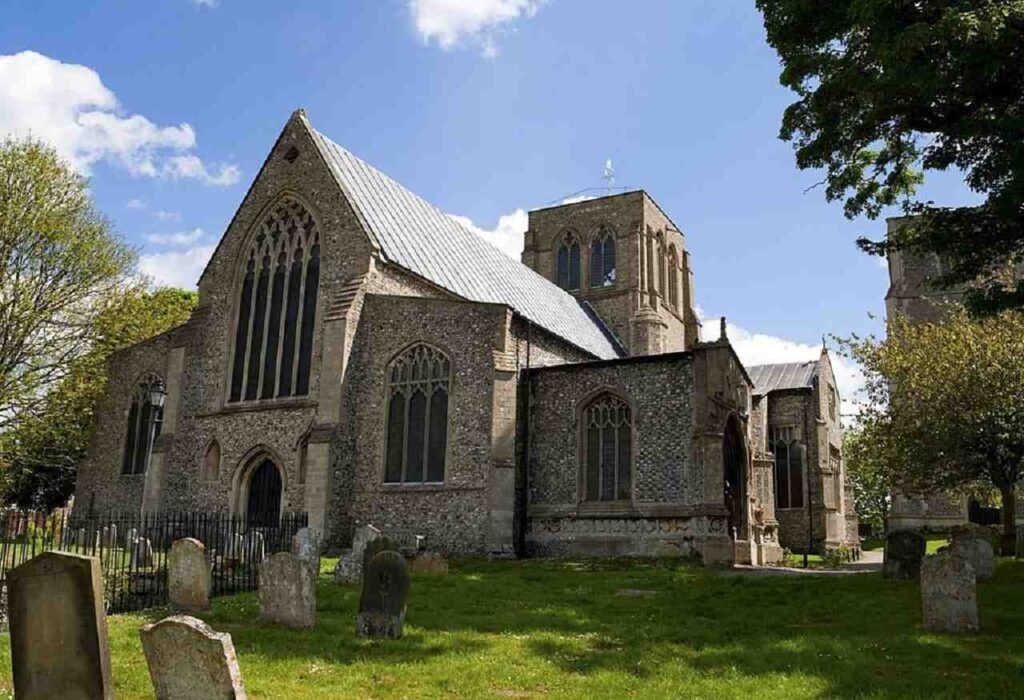
Table of contents
- A Glimpse into History: Legends and Beginnings
- The Enchanted Deer Park: A Name Rooted in History
- Saints and Visions: Withburga’s Monastery and Convent
- Shadows of the Past: Tracing Dereham’s Ancient Settlement
- An Important Market Centre: Dereham’s Flourishing Growth
- St. Nicholas Church: A Timeless Beacon of Faith
- Rise from the Ashes: Dereham’s Georgian Transformation
- Evolving through Eras: Market Town and Beyond
- Tracks of Change: Dereham’s Railway Revival and Transformation
- Dereham: Where Cultural Enrichment Meets Recreational Pursuits
- FAQ’s
A Glimpse into History: Legends and Beginnings
The name Dereham produces a rich tapestry of ancient eras, revealing the secrets of its genesis. According to legend, the town’s appellation derives from an ancient deer park that once graced the area, giving rise to the translation “enclosure for deer.” This connection to the natural world transports us to a time when communities coexisted with the untamed wilderness, leaving behind unforgettable traces of their existence.
The annals of Dereham’s past revolve around the tale of Saint Wihtburh, a princess who established a monastery and convent in the town during the seventh century. Inspired by a vision of the Virgin Mary, her legacy endures through these hallowed sites, interweaving spiritual devotion with historical significance.
The Enchanted Deer Park: A Name Rooted in History
Dereham’s name itself gives a word of history. Gotten from a deer park that once graced the land in the seventh hundred years, its name means “nook for deer.” This enthralling historical background offers a brief look into the town’s well-established past, where the presence of deer added a bit of charm to the scene even before the Saxons showed up.
Saints and Visions: Withburga’s Monastery and Convent
As per nearby custom, the Holy person Wihtburh, otherwise called Withburga, added a hint of heavenly importance to Dereham’s set of experiences. As the most youthful girl of Lord Anna of the East Points, she established a cloister and a religious circle in the seventh hundred years. Rumors from far and wide suggest that her vision of the Virgin Mary propelled this consecrated foundation. While not referenced in that frame of mind of the Respected Bede, her heritage adds an ethereal layer to Dereham’s starting points.
Shadows of the Past: Tracing Dereham’s Ancient Settlement
Archeological bits of knowledge uncover that the town’s set of experiences originates before recorded proof. It was only after Promotion 798 that the principal reported settlement arose around here. This disclosure shows an energetic local area, in spite of the fact that proof of its previous presence was sparse. The shadows of time make this disclosure all the really interesting, indicating a set of experiences that broaden further back than we can comprehend.
An Important Market Centre: Dereham’s Flourishing Growth
The pages of history come alive with the mention of St Etheldreda, who held Dereham in the eleventh century. This period marked the town’s emergence as a significant market center, bustling with life and commerce. With three mills contributing to its economic prosperity, Dereham’s growth was undeniable, setting the stage for its future prominence.
St. Nicholas Church: A Timeless Beacon of Faith
Dereham’s heartbeat resonates within its community at the core of St. Nicholas Church. Architects constructed this marvel during the Norman era, and the town’s evolution through the ages is evident in it. The church underwent structural changes in the 1200s, 1300s, and 1400s, with each alteration leaving behind the mark of its respective era. As you gaze upon its sacred walls, you forge a connection to generations of the past, embracing a historical fragment that surpasses the constraints of time.
Rise from the Ashes: Dereham’s Georgian Transformation
Dereham’s journey through history wasn’t without challenges. The town faced destructive fires in both 1581 and 1679, which ravaged numerous medieval buildings. However, from the ashes of destruction arose a new chapter in Dereham’s story the Georgian era. This period saw the town adorned with the architectural elements that still grace its streets today, offering a blend of the past and the present.
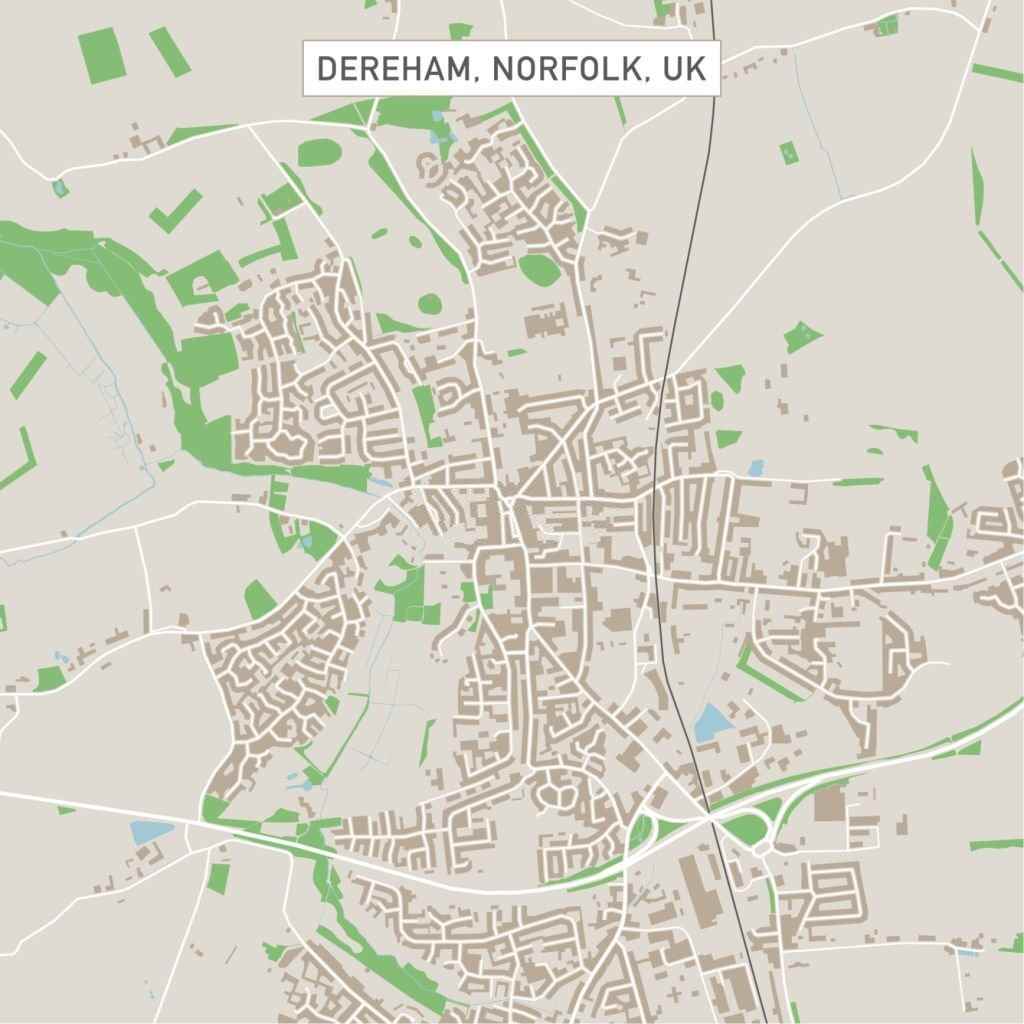
Evolving through Eras: Market Town and Beyond
Dereham used to be a small town, but it grew into a busy market town that can adapt to change. In the past, it had markets and mills that were very busy. The St. Nicholas Church is the center of the town and it shows how the town has changed over time.
Dereham has a long history that goes back to ancient times. People who lived there a long time ago used tools made of greenstone and burnt flints. Archaeologists found Roman coins and other things that help us understand the town’s past.
From Captivity to Freedom: The French Prisoners of War
In the late 1700s, French prisoners of war were kept in Dereham’s church bell tower while they were being taken from Great Yarmouth to Norman Cross by the East Norfolk Militia. One of the prisoners, Jean de Narde, escaped on October 6, 1799, but was shot and killed when he refused to surrender. A memorial stone was later erected in 1858 to honor the shift from enemies to friends.
Windmills and Industrial Progress
Over time, Dereham underwent changes that were reflected in the East Dereham Windmill. Constructed in 1836, the windmill relied on wind power for an extended period. It also carried the names Norwich Road Mill or Fendick’s Mill. In 1922, it transitioned from wind power to engine power, demonstrating the town’s evolving nature. Although the windmill ceased its operations in 1937, it reopened as an exhibition center in 2013. This serves as a reminder of the town’s perpetual transformation.
Dereham Rifle Volunteer Corps: A Call to Arms
In 1859, during a hot summer, Dereham came together for a cause. They had a meeting at the Corn Exchange where they started the Dereham Rifle Volunteer Corps. Reverend Armstrong gave a passionate speech that inspired around thirty men of different ages to join. They wore a grey uniform to show their commitment. They practiced regularly to be ready to protect honor, which they did when royalty came to Dereham.
A Town in the Grip of War: First World War
As the world was plunged into the chaos of the First World War, Dereham felt the impact. The 5th Battalion of the Norfolk Regiment made its headquarters at Quebec Street, with the Corn Exchange serving as its base. The Masonic Hall on Norwich Road became a storage site, while the Assembly Rooms transformed into a hub for medical inspections. However, the war did not spare Dereham from tragedy. The town faced the wrath of a Zeppelin air raid on September 8, 1915, leaving buildings damaged and lives changed forever.
Zeppelin Raids: Destruction and Resilience
The skies over Dereham became ominous as Zeppelins released bombs, causing widespread destruction. In December 1915, Zeppelin L14 spread terror between Bylaugh Park and Dereham. The town saw seventy-five bombs rain down, reducing houses to rubble and heavily impacting the Red Cross hospital in the vicarage. Both the guildhall and church windows also suffered damage. Despite the extensive devastation, Dereham’s spirit remained unbroken, showcasing the resilience that characterized the town.

Tracks of Change: Dereham’s Railway Revival and Transformation
In Dereham, there is a story about railways that shows how they changed the town. The first railway came in 1847 and went to Wymondham. Later, more railways were built that connected Dereham to other towns like King’s Lynn and Fakenham. The railways helped businesses and people move around. This article talks about the history of Dereham’s railways and how they changed the town.
A Historic Journey: Rise of the Railways
Connecting Communities: Dereham’s First Railway Line
The year 1847 marked a significant turning point for Dereham as a single-track railway line was established, connecting the town to Wymondham. This marked the inception of a transformative era, bringing unprecedented connectivity and economic growth to the region. The rhythmic chugging of steam engines echoed through the town, heralding a new chapter in its history.
Expanding Horizons: The King’s Lynn Connection
In 1848, another milestone was reached with the opening of a second railway line, this time linking Dereham to King’s Lynn. This expansion opened up avenues for trade, travel, and cultural exchange, fostering a sense of unity among neighboring communities. The once-isolated town was now part of a broader network, a harbinger of the transformative power of railways.
Towards the Coast: Extending to Wells-next-the-Sea
The railways continued to push boundaries, quite literally, as a line from Dereham to Fakenham was established in 1849. This line’s extension to the coastal town of Wells-next-the-Sea in 1857 further solidified Dereham’s importance as a key junction. The town’s railways not only facilitated the movement of goods and people but also connected diverse landscapes, breathing life into its surroundings.
The Golden Era: Railways and Local Industry
Industrial Progress: Dereham’s Railway Depot
The development of railways brought about an industrial renaissance in Dereham. The town proudly boasted its railway depot, a bustling hub of activity where locomotives were maintained, and goods were loaded and unloaded. This depot catalyzed the growth of local industries, providing a lifeline for trade and employment opportunities.
Sidings and Significance: Complex of Sidings
Dereham’s railway complex wasn’t limited to the depot alone; an extensive network of sidings crisscrossed the town, serving various industrial sectors. From timber to textiles, these sidings played an indispensable role in transporting raw materials and finished products. The clatter of wheels on tracks symbolized progress and prosperity.
Challenges and Evolution: Changing Tides
Ebb and Flow: Changing Passenger Services
The 1960s witnessed a series of changes that shaped the future of Dereham’s railways. Passenger services between Dereham and Wells were withdrawn in 1964, marking the end of an era for local travelers. The tracks that once reverberated with the laughter and chatter of passengers now faced a quieter existence.
A New Dawn: Revival and Freight
While passenger services dwindled, the railway network didn’t fade into obscurity. The track between Fakenham and Wells was lifted soon after, but the line from Dereham to Wymondham witnessed a revival of sorts. It returned to single-track operation in 1965, primarily catering to freight. The clank of goods wagons remained a testament to the enduring legacy of the railways.
Tracks of Transformation: Dereham’s Identity
The Heart of Norfolk: Central Location
Dereham proudly embraced the title “The Heart of Norfolk,” a reflection of its central location within the county. This designation wasn’t just symbolic; it was rooted in the town’s historical significance as a transportation hub. The railways had etched their presence on the town’s identity, shaping its narrative for generations to come.
A Modern Evolution: A47 Bypass
The advent of modern infrastructure brought about a new era of change. In 1978, the town witnessed the construction of the A47 bypass, a seven-mile part-dual-carriageway that reshaped transportation routes. This development, while symbolizing progress, repurposed a section of the former railway line, weaving threads of old and new.
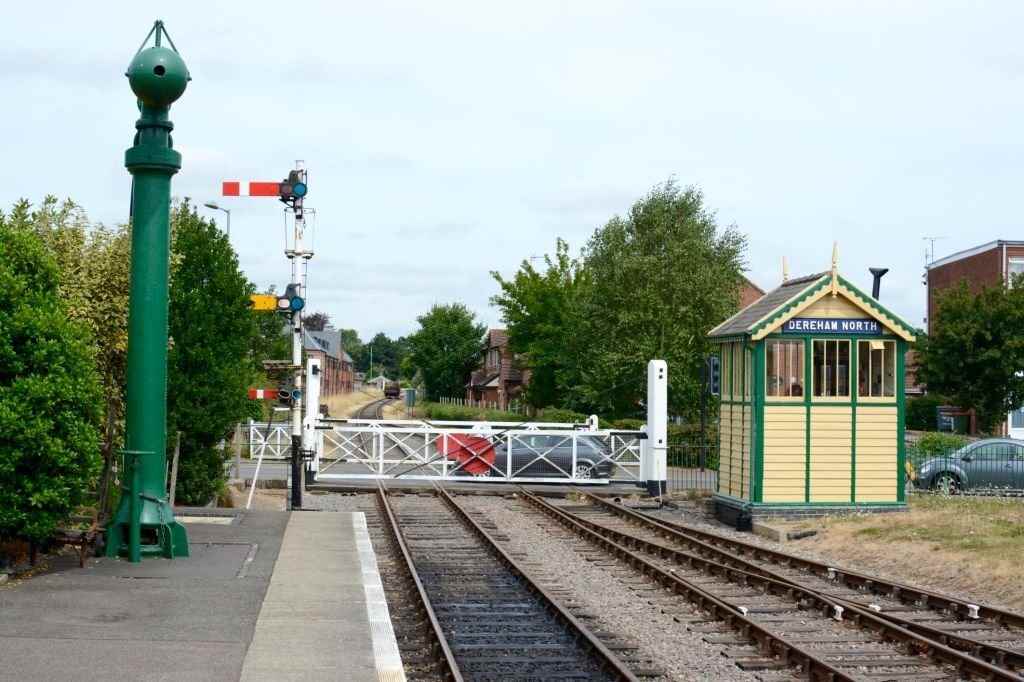
Dereham: Where Cultural Enrichment Meets Recreational Pursuits
Dereham has more to offer than just markets and streets. It has a rich culture. The Corn Exchange used to be a place where famous bands like Small Faces, Cream, Pink Floyd, and The Jimi Hendrix Experience performed. Now it is a cinema and nightclub, which shows how the town has changed over time. People who like sports can join Dereham’s sports clubs, like Dereham Town FC and Dereham Rugby Club.
These clubs help people become better athletes and make friends. Dereham also cares about education and sports. The Dereham Education and Soccer Academy is a partnership between the local soccer club and Northgate High School Sixth Form College.
Dereham Leisure Centre: A Hub of Activity
The Dereham Relaxation Center, situated on the site of an old rail route train stop, is the heartbeat of the town’s sporting scene. This cutting-edge office houses a pool, rec center, dance studios, and different games offices. The middle resounds with the happy reverberations of individuals participating in wellness exercises and chasing after better ways of life. Families, wellness lovers, and people of any age meet up here, framing an energetic local area that values actual prosperity.
Open-Air Tennis Courts: A Playground for Sports Enthusiasts
For those with a love for the classic game of tennis, Dereham offers open-air tennis courts that bask in the natural sunlight. As you step onto the courts, the crisp sound of racquets striking balls fills the air, creating an inviting atmosphere for both amateur players and seasoned professionals. These courts provide the ideal setting for players to hone their skills, socialize, and connect with fellow tennis enthusiasts.
Dereham Recreation Ground: Where Play Knows No Boundaries
The Dereham Recreation Ground, situated nearby, reflects the town’s commitment to offering recreational spaces for all. Play equipment for children encourages the exploration of their imaginations, filling the air with giggles and laughter. Skateboarders demonstrate their skills in the skate park, and picnics and outdoor gatherings draw friends and families together. This vast green area serves as a leisure canvas, where memories are created and communities thrive.
Striking a Perfect Game: Ten-Pin Bowling at Strikes
Dereham caters not only to the physically active but also to those seeking friendly competition in a relaxed setting. Strikes, a local establishment, offers a ten-pin bowling alley where players can challenge each other while enjoying a delightful time. The sound of falling pins resonates with the spirit of camaraderie, making it a popular destination for groups and individuals alike.
Bridging Academics and Athletics: Dereham Education and Soccer Academy (DESA)
Dereham’s commitment to nurturing talent extends beyond the pitch. The Dereham Education and Soccer Academy (DESA), a collaborative effort between Northgate High School Sixth Form College and the football club, offers a unique platform for aspiring athletes. This innovative program allows students to pursue a Level 3 BTEC in Sport while also participating in a football academy. Graduates of DESA, including notable names like Luke Hannant and Frazer Blake-Tracy, exemplify the successful fusion of academics and sports.
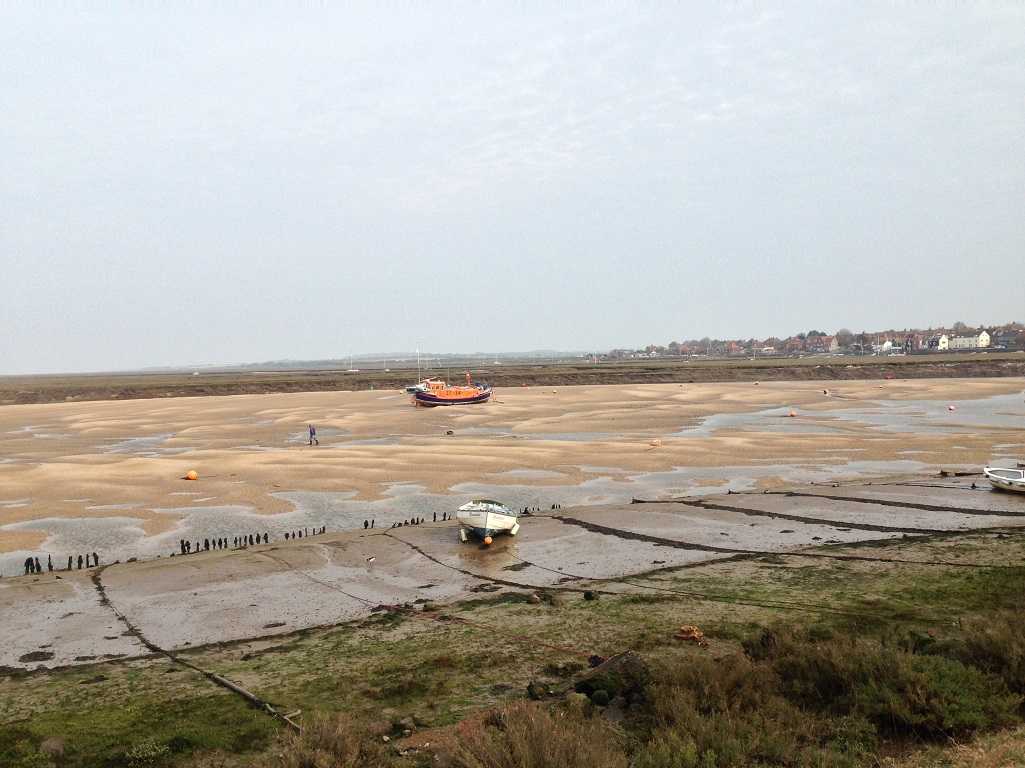
FAQ’s
Dereham, located in Norfolk, UK, is known for its rich history dating back to Roman times. It’s also celebrated for its vibrant market town atmosphere and connection to the famous author George Borrow.
Dereham boasts a variety of historical attractions, including the imposing Dereham Windmill, which offers panoramic views of the surrounding area.
Absolutely, Dereham offers several outdoor activities. One can explore the picturesque Neatherd Moor, enjoy leisurely walks along the Mid-Norfolk Railway, or discover the scenic beauty of the surrounding countryside.
Certainly! The Mid-Norfolk Railway is a heritage railway that runs between Dereham and Wymondham. It provides visitors with a nostalgic steam train experience, passing through lovely Norfolk landscapes.
To experience local culture, you can explore Dereham’s bustling market, held every Tuesday and Friday. This is an excellent opportunity to interact with locals, sample fresh produce, and discover unique crafts.
